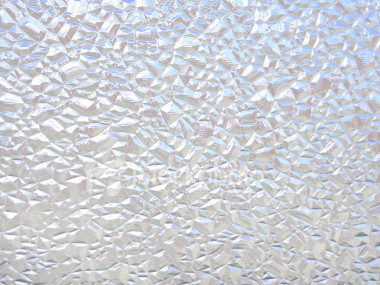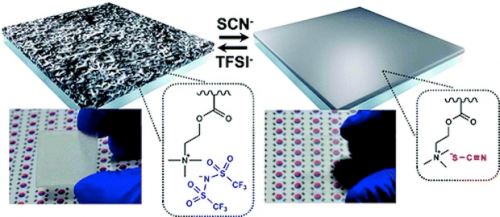New Smart Glass: Waaaaay Smarter than Old, Not Smart Glass
Glass is the best. Glass is the friend who drives you to the airport without complaining, who helps you move your fourteen-ton couch in exchange for beer, who tells you that you’ll regret the neon green mohawk when you look back at your wedding photos. Glass goes the extra mile. Without glass we’d either live and work in rooms devoid of daylight or we’d punch holes in the walls and our homes and offices would be full of weather, confused seagulls, and the occasional ambitious praying mantis. It would be chaos.
Now imagine if glass could go one better: if glass could get you tickets to the Superbowl, or if it let you drive its Bugatti. In my humble opinion, that day has dawned.
Image courtesy helixated.com
A group of South Korean scientists have developed new glass that “becomes more or less transparent according to the light outside, darkening to save air conditioning bills on hot days, and letting in warmth on cold days to reduce heating costs. But unlike other designs, it does so automatically, without users having to use a control to dim or brighten the effect” (Schiller). At this point, if you’re a devoted reader of ARCHITERIALS, you’re probably thinking, “but wait wasn’t there that glass that changes color and then that other really cool irridescent glass film? Hasn’t this been DONE??”
Well …. yes.
BUT there are drawbacks to many of the existing varieties of smart glass (electrochromic glass, for instance, or suspended particle displays): “many are expensive, degrade after relatively short periods, or present environmental problems during manufacturing processes” (Schiller). So if you’re looking for a way to reduce heating and cooling bills but don’t want to degrade the environment by more than the minimum possible, then theoretically this new smart glass might work for you.
The researchers assert that their layered assembly of polymer, counterions, and methanol creates a low-cost, stable window embettered by an ability to switch automatically from transparent to opaque in a matter of seconds (Schiller). I assume that this is based on the amount of light that hits the glass. In case you are not familiar (I wasn’t): counterions exhibit a charge opposite to the substance with which they are associated.
Image courtesy Chang Hwan Lee, Ho Sun Lim, Jooyong Kim†, and Jeong Ho Cho
So here’s how I understand this: the researchers created an environment where nanocrystalline surface structures either scattered the incident light (producing an opaque effect) or dissolved away, allowing light to travel through the glass. The assembly is less toxic to produce than other chemical-intensive composites, and rather than requiring an electric current to achieve a transition from opaque to transparent, the material can make the change on its own. Magnificent.
I have filed smart glass under WATER because it makes sense.
Cited:
Schiller, Ben. “Smart Glass Becomes More Or Less Transparent Depending On The Weather.” Fastcompany.com 10/3/11. Accessed 10/4/11. URL.
“Counterion-Induced Reversibly Switchable Transparency in Smart Windows.” Chang Hwan Lee, Ho Sun Lim, Jooyong Kim and ,Jeong Ho Cho. ACS Nano 2011 5 (9), 7397-7403. URL.


















Leave a Wordpress Comment: